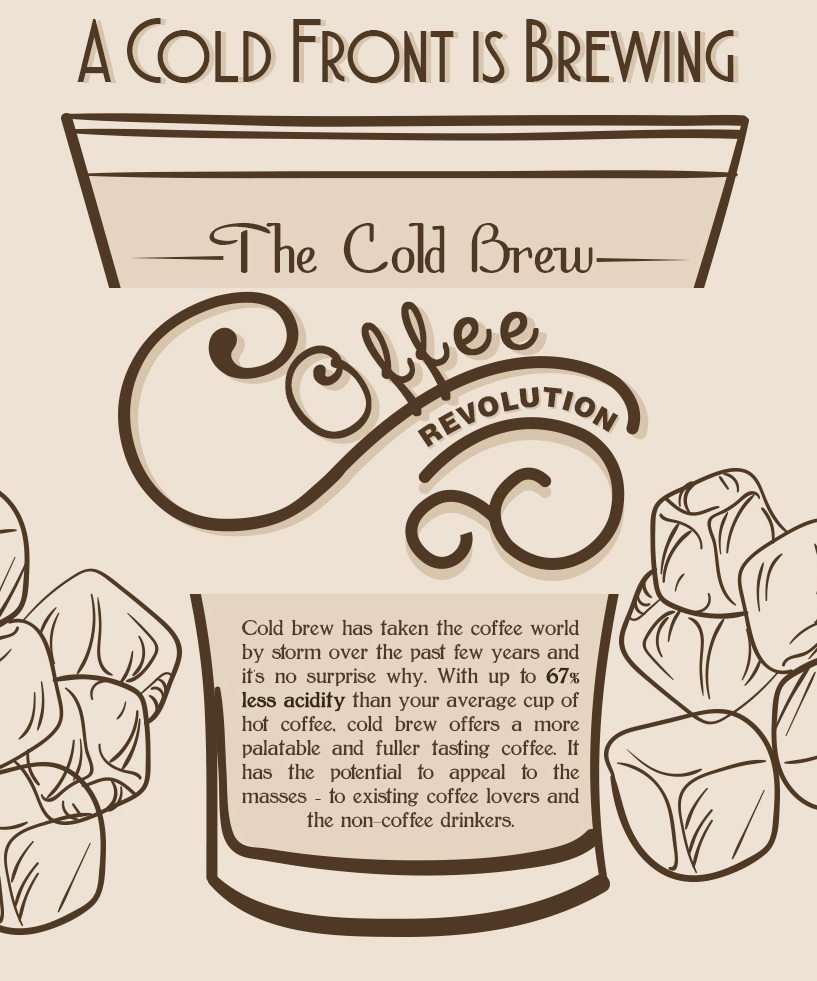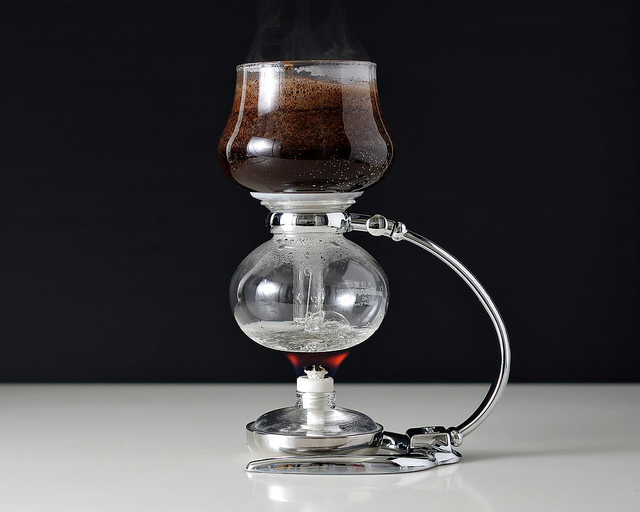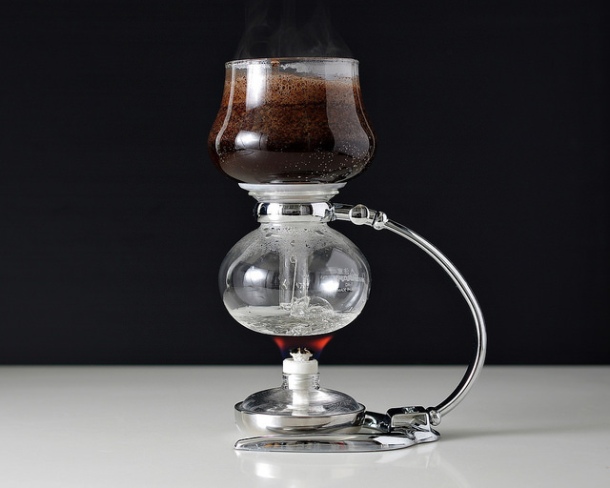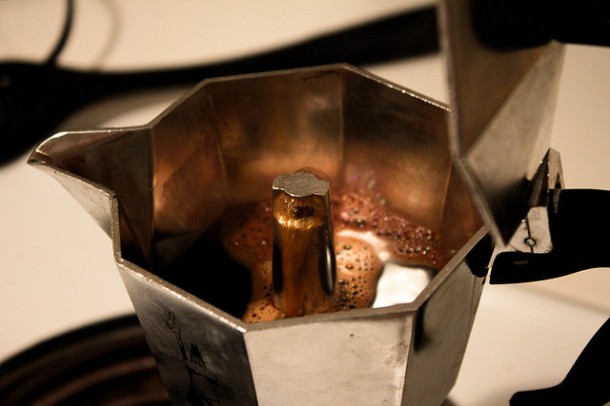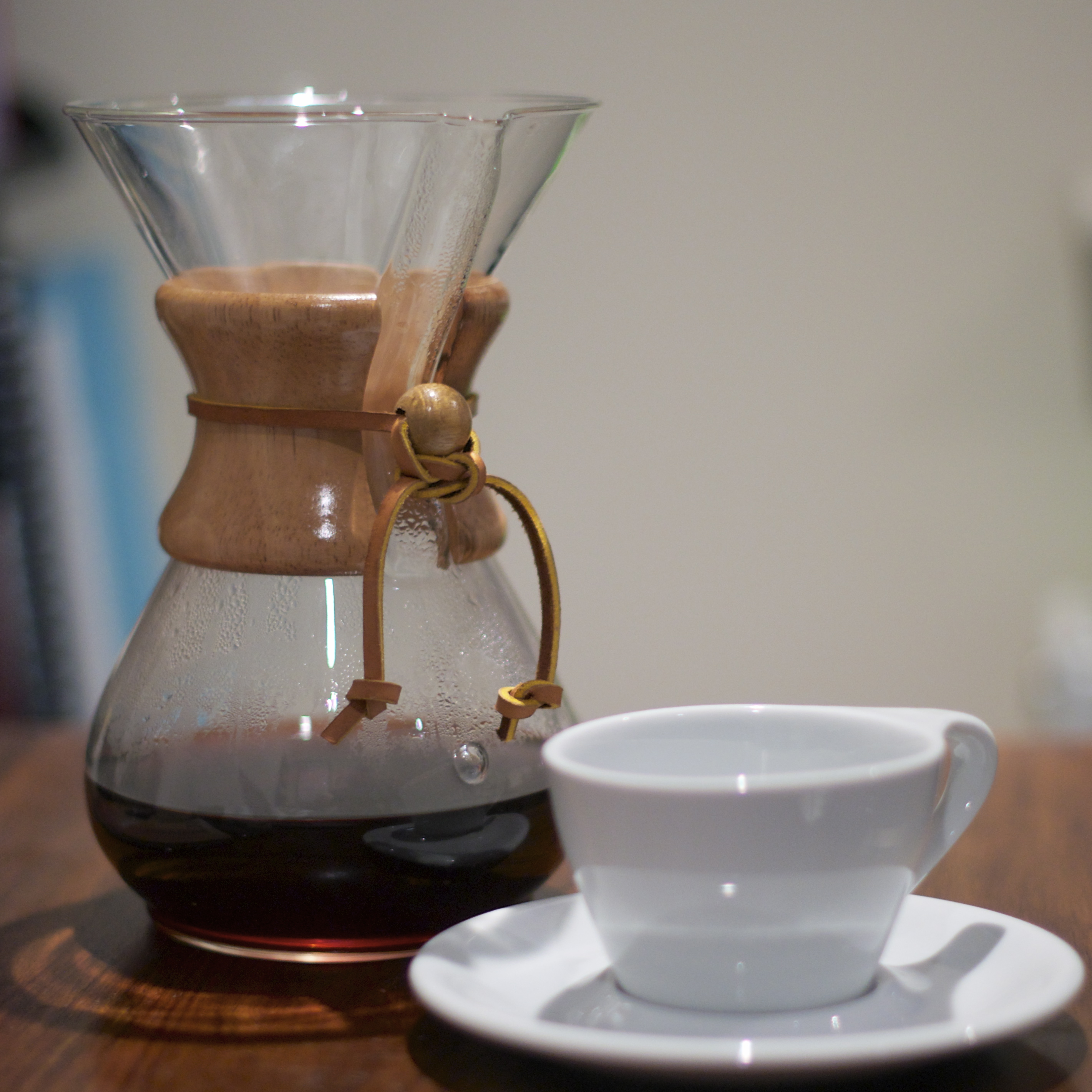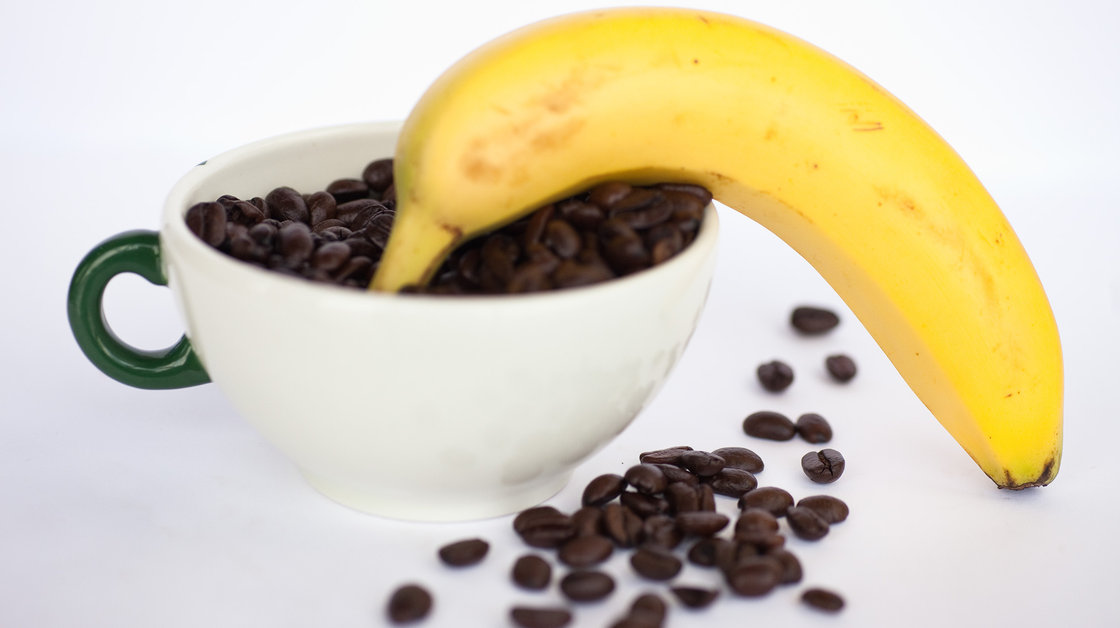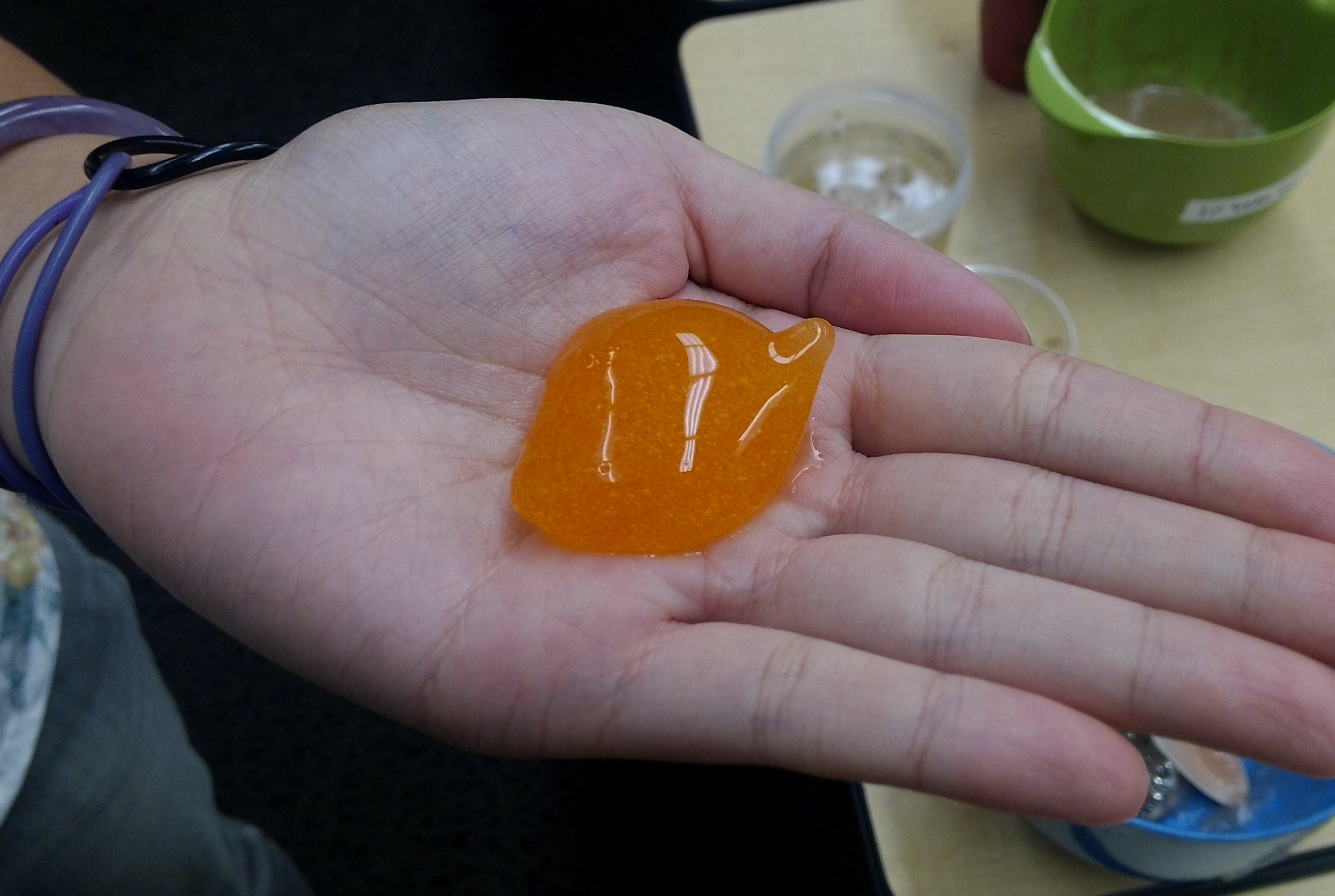Tag Archive for: coffee
ISSpresso & Outredgeous
/in What We're Reading/by Grant Alkin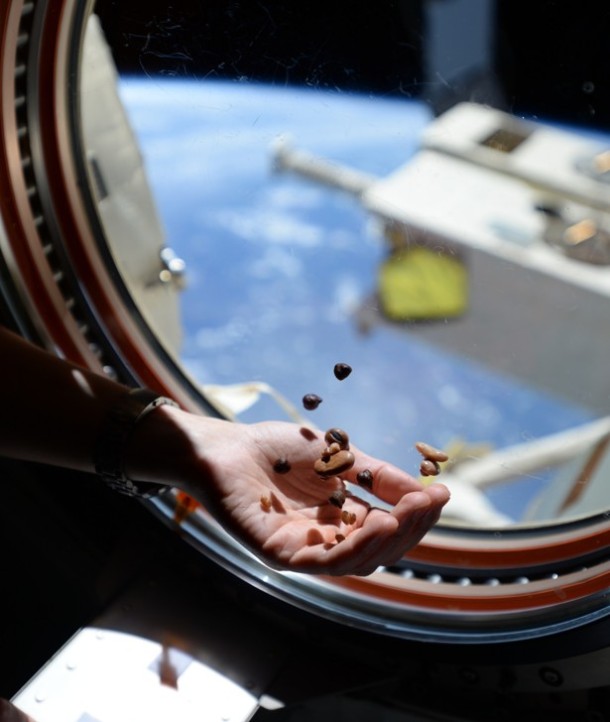
Italy’s favorite coffee, Lavazza, and Italian aerospace firm, Argotec, came together to manufacture an espresso machine suitable for space flight; astronauts can finally enjoy decent coffee while in orbit. Also now available in space? Fresh red romaine lettuce, dubbed “Outredgeous”, grown and consumed in space, and apparently tastes kind of like arugula.
Read more
Juliet Han
/in Profiles/by Grant AlkinJuliet Han graduated from UC San Diego before moving to Washington D.C. for a music policy internship. She eventually switched to coffee and has now been working in the coffee industry for over a decade. Han has been a judge for regional barista competitions and represented Intelligentsia Coffee in the 2012 U.S. Cup Tasters Championship, where she placed third. Currently, Han is a roaster for Blue Bottle Coffee.

Image taken from Juliet Han’s Twitter (@JulietintheBae)
- What hooked you on coffee?
- It hit me one day after years of being a Barista as a side job…I was never bored with it! It was a number of things…the sensory discipline it took to taste coffee (what we call cuppings) to the people in the industry. After 10 years, I’m still learning a lot and having fun.
- The coolest example of science in your coffee?
- I would say the process of roasting. The process of roasting has barely been studied academically unlike a lot of culinary subjects. So many things are going on when you roast coffee; it’s a volatile process with complicated aromas and many variables to consider.
- The food you find most fascinating?
- Mushrooms…the way they grow, their flavors, texture, everything about it.
- What scientific concept–coffee related or otherwise–do you find most fascinating?
- I’m studying chemistry right now, so the idea of matter. Everything around us is basically matter comprised of atoms and molecules. It’s that simple, and so complicated. On my first day of class, there was an article of “Chemistry of Roasting” on the bulletin board about the chemicals that are released in the process of roasting; I can’t wait to read it again after I finish this class to make some sense out of it.
- Your best example of a food that is better because of science?
- Dairy, especially milks and cheese, but that’s a whole new world I’m scared to explore.
- How do you think science will impact your world of coffee in the next 5 years?
- Science will impact coffee tremendously as it is slowly starting to already. Coffee is a global agriculture/commodity, a cultural phenomenon and a staple beverage in many countries’. More and more, I’m reading about universities developing “studies” for coffee that vary in topic. From coffee varietals to understanding water temperature, the value of science needed in the coffee community is at a higher demand.
- One kitchen tool you could not live without?
- My Brita water pitcher—LA water is not the tastiest.
- Five things most likely to be found in your fridge?
- Eggs, salsa, carrots, onions, baking soda
- Your all-time favorite ingredient? Favorite cookbook?
- I put Tapatio on most everything. I would put it in coffee if I thought it would make it taste better. Cookbooks, do online publications count? I’m a huge fan of SmittenKitchen.com and ThugKitchen.com.
- Your standard breakfast?
- Coffee, then followed by whatever I can find (day old pastries, yogurt, bananas) unless it’s a big coffee tasting day…then I will make sure to eat a lot of bland carbs so I don’t lose my mind an hour into tasting.
Caffeine vs. Chocolate: A Mighty Methyl Group
/in Science & Food/by Grant AlkinGuest post by Christina Jayson
When my organic chemistry professor told me that the main molecular component of chocolate, theobromine, differs from caffeine only by the absence of one methyl group I was delighted: I could skip an entire step in caffeine metabolism, avoid the bitter taste of coffee, and increase my chocolate consumption. It seemed to make sense that as the caffeine I drank was metabolized by removing the methyl group, caffeine would convert to theobromine (the main compound of chocolate) (Figure 1). At the molecular level, a methyl group is a carbon with three hydrogens attached. It may seem simple, but a methyl group is an integral part of chemistry, biology, and biochemistry. For example, additional methyl groups can help a molecule to cross the blood-brain barrier and enter our brain – this barrier protects our brain from foreign molecules traveling in the blood that can be harmful [1, 2]. In the case of caffeine, it turns out that the extra methyl group on the molecule is what makes coffee active on our central nervous systems and an “energy stimulator,” while chocolate functions as a sweet treat and smooth muscle stimulator.
![Figure 1: During the metabolism of caffeine in the body, the methyl group (highlighted by the yellow box) is removed from caffeine and it is converted to theobromine (Modified from Wolf LK, 2013) [9].](https://scienceandfooducla.files.wordpress.com/2015/09/2.jpg)
Figure 1: During the metabolism of caffeine in the body, the methyl group (highlighted by the yellow box) is removed from caffeine and it is converted to theobromine (Modified from Wolf LK, 2013) [9].
So how do these two molecules act on different parts of the body, making coffee the substance of choice over chocolate bars when midterm season hits?
Caffeine is mostly derived from Coffea Arabica, or coffee beans, and seeds [3]. It is predominantly a central nervous stimulant, though it also stimulates cardiac and skeletal muscles and relaxes smooth muscles. Chocolate, or theobromine, is found in products of Theobroma cacao, or cocoa plant seeds (Figure 2). Much like caffeine, theobromine is a diuretic; however it mainly acts as a smooth muscle relaxant and cardiac stimulant [3]. While these two compounds have similar effects, the key difference is that caffeine has an effect on the central nervous system and theobromine most significantly affects smooth muscle [4]. In behavioral studies, caffeine intake improves self-reported alertness and mood over a period of 24 hours [5]. Theobromine produces mild positive effects in pleasure, but does not affect attention or alertness in moderate doses compared to caffeine [6].
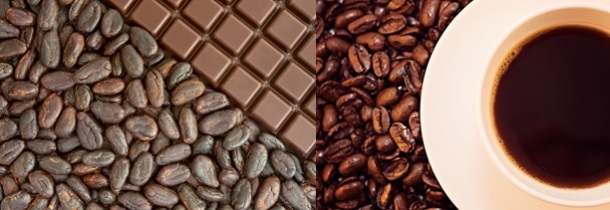
Figure 2: Chocolate (left) is made from Theobroma cacao, or cacao plant seeds and contains theobromine (PC: Nic Charalambous). Coffee (right) is made from Coffea Arabica, or coffee beans, and seeds and contains caffeine (Photo credit: JIhopgood/Flickr).
But the true difference in the compounds lies at the molecular level. Both caffeine and theobromine belong to the methylxanthine chemical family. These chemicals act as stimulants of the nervous system, most notably by binding to adenosine receptors in the brain and thereby blocking adenosine from binding to the receptors [7]. Adenosine binding to adenosine receptors normally reduces neural activity, so the antagonistic action of caffeine and theobromine prevents this activity reduction (Figure 3). The increased energy and alertness that we connect to massive coffee consumption is due to the caffeine preventing your body from responding to signals that tell it to slow down or de-stimulate. Ever felt your hands jitter uncontrollably after too many shots of espresso?
![Figure 3: Caffeine molecules (C) compete with adenosine molecules (A) to bind to the adenosine receptors in the brain (Schardt, 2012) [10].](https://scienceandfooducla.files.wordpress.com/2015/09/4.jpg)
Figure 3: Caffeine molecules (C) compete with adenosine molecules (A) to bind to the adenosine receptors in the brain (Schardt, 2012) [10].
Experiments show the activity of caffeine on the nervous system is stronger than theobromine [7]. Caffeine and theobromine compete with adenosine to bind to the same adenosine receptor. Studies have shown that caffeine molecules are better able to compete with adenosine to bind adenosine receptors than theobromine – caffeine binds these receptors with two to three times higher affinity than theobromine [8].
To gain access to the different locations of the adenosine receptors throughout the body, the extra methyl group on caffeine ends up coming in handy. Because caffeine has three methyl groups instead of two like theobromine, it more easily crosses the blood-brain barrier. In crossing the blood-brain barrier, caffeine can act on the central nervous system. So while theobromine can act as a heart stimulant and smooth muscle relaxant, caffeine – boasting its extra methyl group – has access to the neurons of the central nervous system and can consequently enhance physical performance and increase alertness.
This means my master plan to forego coffee for chocolate won’t actually improve my alertness and energy to the same extent. However, indulging in chocolate flavored coffee may provide me with all the caffeine derivatives I need for a stimulating day.References cited
- Vauzour D, Vafeiadou K, Rodriguez-Mateos A, Rendeiro C, and Spencer JPE. The neuroprotective potential of flavonoids:a multiplicity of effects. Genes Nutr. 2008 3(3-4): 115–126.
- Svenningsson P, Nomikos GG, Fredholm BB. The stimulatory action and the development of tolerance to caffeine is associated with alterations in gene expression in specific brain regions. J Neurosci 1999. 19(10):4011–4022.
- Barile FA. Clinical toxicology: Principles and mechanisms. 2nd ed. Informa Healthcare Press. 2010. Ch 15, Sypathomimetics. 174-177.
- Coleman W. Chocolate: Theobromine and Caffeine. J Chem Educ. 2004. 81(8): 1232
- Ruxton C. The impact of caffeine on mood, cognitive function, performance and hydration: a review of benefits and risks. Nutr Bull 2008. 33:15–25.
- Baggot MJ, Childs E, Hart AB, de Bruin E, Palmer AA, Wilkinson JE, de Wit, H. Psychopharmacology of theobromine in healthy volunteers. Psychopharma. 2013. 228(1): 109-118.
- Kuribara H, Asahi T, Tadokoro S. Behavioral evaluation of psycho-pharmacological and psychotoxic actions of methylxanthines by ambulatory activity and discrete avoidance in mice. J Toxicol Sci. 1992;17:81-90.
- Daly JW, Butts-Lamb P, and Padgett W. Subclasses of adenosine receptors in the central nervous system: Interaction with caffeine and related methylxanthines. Cell Mol Neurobiol. 1983. 1: 69-80.
- Wolf LK. Caffeine Jitters. Chem & Eng News. 2013. 91(5): 9-12.
- Schardt, D. Caffeine! Nutrition Action Healthletter. 2012.
- Swift, C. (2014, June 2). Which is better for your brain? Beer or Coffee? You’ll never guess. [Web log post].
Christina Jayson is a recent UCLA Biochemistry graduate and currently a Ph.D. student in the Biological and Biomedical Sciences program at Harvard.
Coffee Revolution & Freakish Vegetables
/in What We're Reading/by Grant AlkinAre you ready? A cold brew revolution is upon us, according to Espressoworks, and they have an infographic explaining why. If you’re looking for greater and colder things, look towards Alaska, where giant vegetables grow to set world records.
Coffee Brewing Methods
/in Science & Food/by Grant AlkinGone are the days where all that was needed to make a cup of brewed coffee was an auto-drip machine and a paper filter. Coffee shops now have glass siphons lining the counter, looking as if they came straight from a chemistry lab. Baristas can be seen meticulously pouring water from a swan necked kettle into a ceramic funnel, which slowly drips coffee into a cup sitting on a scale. There is even a ready-to-serve cold brew option that was prepared the night before. These days, coffee shops seem to be stocked with new tools for brewing the delicious caffeinated beverage. With the resulting brews varying in flavor, why stick to just one method? Each apparatus has a different extraction process and requirements for grind coarseness, heat, and time.
For all brewing methods, coffee must first be ground; then its soluble components must be dissolved in water, so they are released into the resulting brew. It is suggested to grind coffee right before brewing, since the process releases flavor as well as results in a higher perceptions of aromas; these aromas consist of highly volatile compounds which can evaporate into the air over time [1]. The grind level and particle size also play important roles in the taste of the final cup of coffee. If the grind is too fine, bitter coffee can result from over-extraction of chlorogenic acids; if the grind is too coarse, a weaker brew may result from the decreased surface area [2].
Coffee brewing is generally classified under three types: decoction, infusion or steeping, and pressure methods.
Decoction: Siphon
In decoction, ground coffee is in contact with high temperature water for a period of time, causing a more intense extraction [2]. Siphon, or vacuum brewed coffee, is an example of this method. Since many variables can be controlled, the coffee can be evenly extracted over a period of 45 seconds to 1 minute [3].
A siphon consists of two glass chambers arranged vertically. Near boiling water is added to the bottom chamber with a heat source underneath. When the water is heated past its boiling point (212 °F or 100 °C), the heat source transfers energy to the water and produces vapor, or steam. Eventually, the pressure created from the gas exceeds that of the atmospheric pressure in the siphon. In order to create more room for itself in the bottom chamber, the gas forces the remaining liquid into the upper chamber. The coffee grounds are added at this point and stirred. The heat source maintains a constant pressure, keeping the brew in the upper chamber. Once the brew is complete, the heat source is removed and the water vapor condenses back into liquid form. Since liquid takes up less volume than gas in the bottom chamber, a negative pressure void is created that is then equalized by the brew flowing down [4].
Infusion/Steeping: Chemex
An infusion involves steeping coffee in water before filtration, and creates a milder brew with more acidity [2]. An example is the Chemex, which is a funnel shaped apparatus with a pour over filter cone attached to a decanter. This is similar to a typical auto-drip coffeemaker where the coffee is steeped and dripped through a paper filter. However, the Chemex has some advantages, including control over water temperature, infusion time, and pouring technique. The filter used is also thicker, so the grounds are able to steep in the water and drip out more slowly. More flavor compounds are released, resulting in a clean tasting brew with “bright” and “high” notes [5].
To prepare coffee with the Chemex, a medium to medium-coarse grind is placed on top of a pre-rinsed filter. Hot water is poured from a swan neck kettle (the narrow spout maximizes pour control) in a circular motion. As the first pour touches the coffee grounds, it degasses and carbon dioxide (CO2) is released, resulting in bubbles and puffed up grounds. This is called a “bloom,” and this process influences the flavor and aromas of the brew, including increased acidity if the bloom time proceeds for too long [6]. The reasoning behind this is that when CO2 reacts with water, it produces carbonic acid. Interestingly, lighter roasted coffee beans retain more CO2 than darker roasts [7].
CO2 (aq) + H2O (aq) « H2CO3 (aq)
Once the gas is released, the water starts to dissolve the solubles in the coffee grind, which are responsible for many of the flavor components. As the brew starts to drip into the decanter, additional water is poured in the same circular motion to make sure that the grounds are constantly replenished with fresh water [6]. The grounds must always be immersed to maintain a constant temperature for the brew and to keep the chemical reactions going. This method also creates a strong osmotic pressure to extract the coffee concentrate from the grounds: since there are more coffee solutes in the grind and less in the watery environment, the solutes will want to escape through the semi-permeable cell membranes of the coffee beans. However, since water is continuously poured over the surface of the grounds, there is a possibility of over extraction from the top layer [7].
Pressure: Moka pot
Unlike decoction and infusion, this method involves water being forced through grounds with high pressure and heat, similar to the style of espresso [2]. The Moka pot consists of a bottom chamber with water, a metal filter filled with ground coffee, and a screw-on upper chamber.
Similar to the siphon, a heat source causes the water in the bottom chamber to form steam. However, instead of mixing the water with coffee for steeping, the water vapor pushes the water through the coffee grounds and the brew emerges out of the top portion as a gurgling sound is made. The bottom chamber is not filled all the way with water to ensure an air gap for pressure to form. In fact, in case the pressure in the bottom chamber gets too high, there is a safety valve on the lower chamber that lets the air out to keep the apparatus from exploding.
With all of these different options, brewing coffee is now more of an art form than just a way to obtain caffeine. Whether you use a Moka pot at home or have a barista prepare a cup using a pour over method, you can be sure that each resulting brew will be far from tasting the same.
References cited
- Akiyama, M., Murakami, K., Ohtani, N., Iwatsuki, K., Sotoyama, K., Wada, A., et al. Analysis of Volatile Compounds Released During the Grinding of Roasted Coffee Beans Using Solid-Phase Microextraction. Journal of Agricultural and Food Chemistry. July 2013; 51: 1961–1969.
- Sunarharum W, Williams D, Smyth H. Complexity of coffee flavor: A compositional and sensory perspective. Food Research International. March 2014; 62: 315-325.
- How to Brew Coffee in a Siphon or Vacuum Brewer. Seriouseats.
- Vacuum Pots: The Science Behind the Method. Casa Brasil Coffees.
- A Beginners Guide to Pour Over Coffee Brewing. Prima Coffee.
- What is the Bloom and Why Should You Care? The Roasters Pack.
- Coffee Science: How to Make the Best Pourover Coffee at Home. Seriouseats.
 About the author: Catherine Hu is pursuing her B.S. in Psychobiology at UCLA. When she is not writing about food science, she enjoys exploring the city and can often be found enduring long wait times to try new mouthwatering dishes.
About the author: Catherine Hu is pursuing her B.S. in Psychobiology at UCLA. When she is not writing about food science, she enjoys exploring the city and can often be found enduring long wait times to try new mouthwatering dishes.
Coffee Brewing Chemistry: Hot Brew vs. Cold Brew
/in Science & Food/by Grant AlkinHot or cold, temperature won’t stop many from obtaining their caffeine fix. Depending on the weather and personal preferences, coffee drinkers at home can brew coffee by one of two ways: hot brew or cold brew.
Many are familiar with hot brew coffee. The equipments used for hot brew are widely recognized, and even iconic: the moka pot, French press, Vietnamese coffee filter, and Chemex, to name a few. These equipments, as with all hot brew techniques, involve pouring hot water over a bed of coffee grounds, at a general proportion of 1 oz. coffee to 8 oz. hot water [1]. (That’s 2 level tablespoons per 1 cup of water, on a more home-friendly scale.) The resulting liquid, coffee, is then separated from the grounds and ideally consumed as soon as possible.

Left: Moka pot. Photo Credit: Bill Rice (billrice/Flickr) | Middle: French press/press pot. Photo Credit: Bodum | Right: Vietnamese coffee filter. Photo Credit: Marko Mikkonen (markomikkonen/Flickr)
Cold brew demands more patience. In a Mason jar, French press, or Toddy system, coffee grounds are mixed with room temperature water, and then left to sit for hours—anywhere from three to twenty-four hours—before the solids are filtered out. Cold brew recipes often call for a higher coffee to water ratio: 1 part coffee to 4 parts tepid water, which compared to hot brew, is 2 oz. coffee per 8 oz. water (roughly 4 tablespoons per 1 cup water). Once the grounds are removed, what’s left is black coffee concentrate that is thinned with water or milk before it is served.
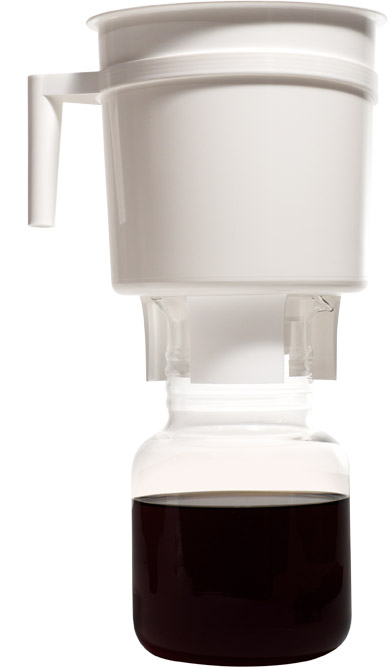
Toddy System for cold brew. Photo credit: Toddy
On the surface, the distinctions between the two methods seem self-explanatory. Hot brew quickly produces fragrant java with bite and acidity, whereas cold brew rewards patience with condensed coffee that is smooth and sweet. To begin to understand the flavor profile differences, it helps to first get acquainted with the coffee grounds.
Coffee grounds contain a hodgepodge of volatile and non-volatile components, such as various oils, acids, and other aromatic molecules [2]. Collectively, these compounds that are found in coffee grounds are referred to as “coffee solubles” and significantly contribute to coffee flavor [2]. Brewing is the process of extracting these components from the grounds, so coffee beverages are technically a solution of coffee solubles and water. Given that coffee grounds are used in both of our brewing methods, the principle variables are temperature and time.
Temperature affects the solubility and volatility of the coffee solubles. Relative to brewing, solubility describes the ability of the solubles to dissolve out of the grounds and into the water; volatility refers to their ability to evaporate into the air. Coffee solubles dissolve best at an optimal temperature of 195-205°F [3]. With more coffee solubles extracted, hot brew coffees are described as more full-bodied and flavorful when compared to cold brew. Moreover, due to increased volatility with higher temperatures, the aromatics are more readily released from coffee, giving rise to that beloved scent of freshly-brewed coffee.
On the downside, oxidation and degradation also occur more rapidly at higher temperatures. The oils in coffee solubles can oxidize more quickly at elevated temperatures, causing coffee to taste sour. Acids also degrade, the most notable of which is chlorogenic acid into quinic and caffeic acid, causing coffee to taste bitter [2].
Where cold brew lacks in temperature, it makes up for in time. Coffee solubles have markedly decreased solubility in room temperature water. Increasing the brew time from a few minutes to many hours aims to maximize extraction of the solubles from the grounds. Even over twenty-four hours, not all the coffee solubles will have dissolved; this is why the amount of coffee grounds is doubled, in an effort to make up for the lower extraction rate. In comparison with hot brew, cold brew is sometimes described as tasting “dead” or “flat” due to the lower yield of coffee solubles [3]. Further, decreased volatility prevents aromatics from escaping from coffee as easily, so cold brew is much less perfumed than its hot brew counterpart.
Oxidation and degradation will still occur in cold brew methods, but this happens much more slowly; bitterness and acidity are just about absent in cold brew coffee, especially if it is kept cold. Though, cold brew doesn’t merely taste like hot brew without the bitterness. Fans of the cold brew method have emphasized that cold brews contain a completely different flavor profile that can’t be found with hot brews. Going back to the idea of solubility, not all flavor compounds of coffee solubles are equally soluble. A good majority of the coffee solubles are still able to leach out of the grounds, even in colder water. The compounds that don’t dissolve are the ones often attributed to unfavorable flavors [4]: these stay in the grounds that are subsequently tossed away. Consequently, cold brews take on a much sweeter, floral profile.
To note, brew time does not determine caffeine content, nor does bitterness indicate coffee strength. Caffeine is extracted early in the brewing process, so extending brew time, by either method, would only result in over-extracted coffee [1]. Coffee “strength” is defined as the amount of dissolved coffee solubles per unit of coffee volume [1]. On that train of thought, cold brew certainly produces stronger coffee, given that the brewing process purposely concentrates the coffee solubles. Though, keep in mind that rarely anyone drinks cold brew coffee straight up; many enjoy this smooth drink diluted with milk or water.
Whether you’re an adamant hot brew addict or a die-hard cold brew fanatic, at least coffee drinkers can agree that as long as there’s caffeine, everything’s mellow.
References cited
- Brewing—How to Get the Most Out of Your Coffee. Mountain City Coffee Roasters.
- Sunarharum W, Williams D, Smyth H. Complexity of coffee flavor: A compositional and sensory perspective. Food Research International. March 2014; 62: 315-325.
- Giuliano, Peter. “Why you should stop cold-brewing, and use the Japanese Iced Coffee Method.” Dymaxion.
- What Everyone Ought to Know About Iced Coffee & Cold Brew. (2012, June 26). Prima Coffee.
 About the author: Alice Phung once had her sights set on an English degree, but eventually switched over to chemistry and hasn’t looked back since. Read more by Alice Phung
About the author: Alice Phung once had her sights set on an English degree, but eventually switched over to chemistry and hasn’t looked back since. Read more by Alice Phung
Scrumptious Strawberries & Caffeine Jitters
/in What We're Reading/by Grant AlkinSupermarket strawberries have become bland through decades of agriculture, so now scientists are figuring out how to bring its flavor back. In the meantime, that banana isn’t going to help with your caffeine jitters.
Read more
Spherification Potluck
/in Science & Food/by Grant AlkinThere are times when gourmet edges more towards the laboratory than the kitchen; spherification is one of those times. In this culinary technique, liquids are transformed into globular semisolid gels thanks to a hydrocolloid gum extracted from seaweed. When these gel-encased balls are broken, the liquid contents gush out, akin to biting down on mochi or a Gushers candy. In theory, almost any liquid can be spherified, so the possibilities are endless. Ever wanted to eat plum juice caviar, spherical crème brûlée, or mojito spheres? With food-grade sodium alginate, calcium solution, and some creativity, it’s possible.
At the Spherification Potluck last month, graduate students Liz Roth-Johnson and Kendra Nyberg delved into the process on the molecular level. Gelation is made possible through the interaction between alginate and calcium ions. Alginate is a long, negatively charged, noodle-like molecule. When mixed into a liquid, alginate floats about freely, its elongated structure creating a thick, jelly-like consistency. Calcium ions are single calcium atoms with two positive charges, enabling each ion to link together two alginate molecules. Many calcium-linked alginate molecules gives rise to a more solid structure—the gel skin that encases a gooey center.
Attendees at the student event opted for items found in kitchen pantries and grocery store shelves, such as pomegranate molasses, rose water, coffee drinks, milk tea, sodas, guava nectar, and hot sauce.
In the first attempt at spherification, coffee was mixed with the sodium alginate to produce a rather thick goop. Plopping globs of this dense solution into the calcium chloride baths gave comical results, as the mixture adamantly refused to form any shape remotely resembling a sphere. Some blobs even broke upon removal from the calcium chloride baths.
Milk tea and Jarritos orange soda gave the best results in terms of shape and stability. Initially, the center of the milk tea spheres was thicker than expected, yielding a much chewier texture than bargained for. Minimizing incubation time in the calcium chloride solution managed to fix this halfway, somewhat decreasing the thickness of the gel casing. A quick search also revealed that our recipe used twice the sodium alginate other spherification recipes called for. If less alginate was added to the milk tea or orange soda, the spheres would have definitely been gooier.
The most difficult to work with was Tapatio, and not just because of the spicy fumes that emanated from the mixing bowl. Hot sauce is acidic, meaning it is full of positively charged hydrogen ions. Mixing it with alginate neutralizes the negative charges, hampering the interaction between alginate and calcium. No alginate-calcium interaction, no cross-link formation, no gel. Dropping the Tapatio-alginate mixture into calcium chloride resulted in nothing more than dissolved Tapatio swirling around in solution.
Spherification encompasses a high degree of flexibility. Besides the gamut of foods that can be used, there are also technical alterations—the ratio of liquid to sodium alginate in the pre-sphere goop; the concentration of the calcium chloride solution; the amount of time the spheres are left sitting in the calcium solution. And this is only the direct method. Other variations on this technique include reverse and frozen reverse spherification. With spherification kits readily available online, why not try spherifying your own recipe? Share your spherification adventures with us in the comments below!

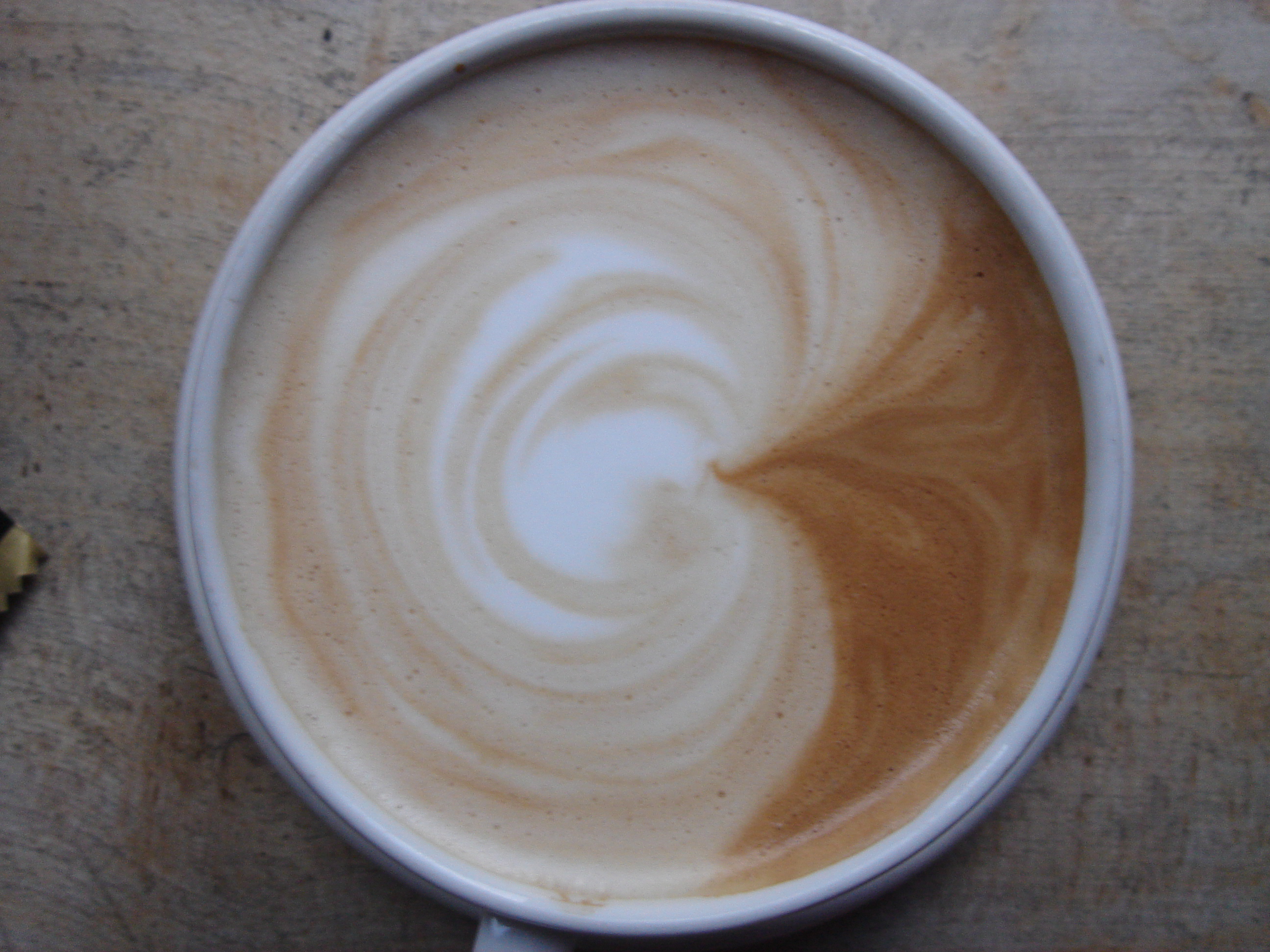



![Photo credit: Chris Swift, Rogers Family Co [11]](https://scienceandfooducla.files.wordpress.com/2015/09/5.jpg)
